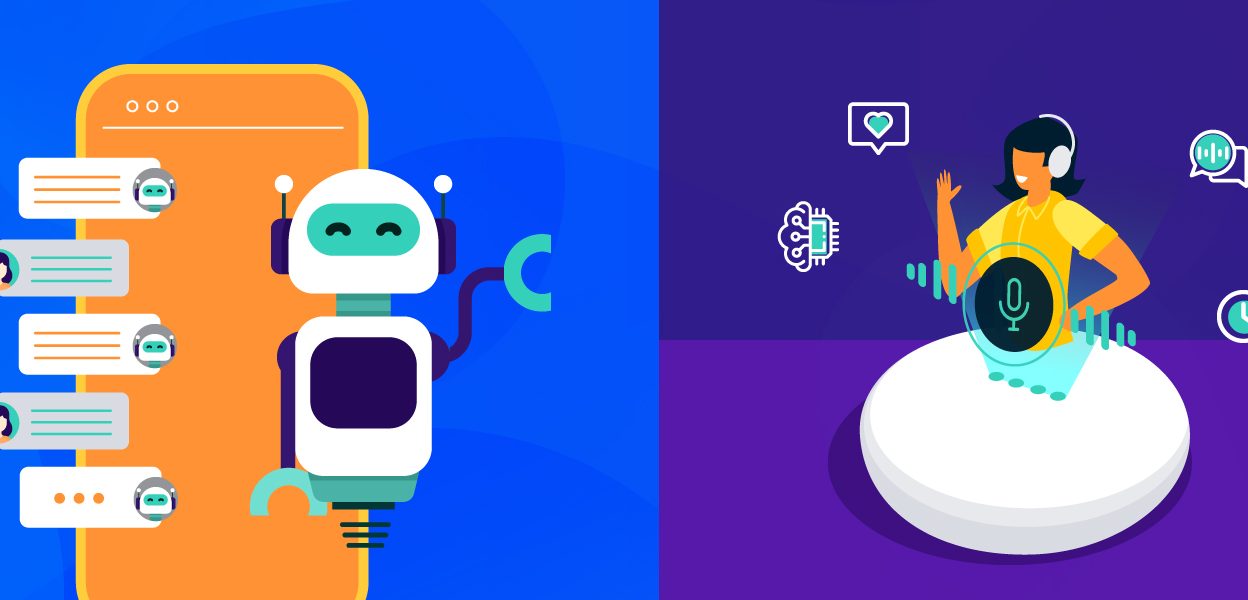Introduction
In today’s digital-first world, users expect instant, personalized, and seamless interactions. Enter AI-powered chatbots and virtual assistants—intelligent tools that are transforming user experience (UX) across websites, apps, and platforms. These technologies not only automate routine tasks but also deliver contextual, human-like conversations that enhance engagement and satisfaction. Let’s see AI-Powered Chatbots & Virtual Assistants: Enhancing UX with Intelligent Automation.
This blog explores how AI-driven conversational interfaces are reshaping UX, their underlying technologies, use cases, design principles, challenges, and future trends.
What Are AI-Powered Chatbots and Virtual Assistants?
🤖 Chatbots
Software applications that simulate human conversation via text or voice. They can answer questions, guide users, and perform tasks.
🧠 Virtual Assistants
More advanced than chatbots, virtual assistants use AI to understand context, learn from interactions, and perform complex tasks (e.g., Siri, Alexa, Google Assistant).
How AI Enhances Chatbots and Assistants
1. Natural Language Processing (NLP)
Enables understanding of user intent, sentiment, and context.
2. Machine Learning (ML)
Allows bots to learn from interactions and improve over time.
3. Speech Recognition
Converts spoken language into text for voice-based assistants.
4. Conversational AI
Combines NLP, ML, and contextual awareness to simulate human-like dialogue.
Benefits of AI-Powered Conversational Interfaces
✅ 24/7 Availability
Bots never sleep, ensuring round-the-clock support.
✅ Instant Responses
Reduces wait times and improves user satisfaction.
✅ Personalization
AI tailors responses based on user history and preferences.
✅ Scalability
Handles thousands of interactions simultaneously.
✅ Cost Efficiency
Reduces the need for large support teams.
Use Cases Across Industries
🛍️ E-Commerce
- Product recommendations
- Order tracking
- Cart recovery
🏥 Healthcare
- Appointment scheduling
- Symptom checking
- Medication reminders
📚 Education
- Virtual tutors
- Course navigation
- FAQ handling
🏦 Banking
- Balance inquiries
- Fraud alerts
- Loan application guidance
🧳 Travel
- Booking assistance
- Flight updates
- Local recommendations
Designing Chatbots for Great UX
1. Define Clear Objectives
What problem is the bot solving? Is it for support, sales, or onboarding?
2. Use Conversational Language
Avoid robotic tones. Use friendly, natural phrasing.
3. Guide the User
Provide suggestions, quick replies, and fallback options.
4. Handle Errors Gracefully
If the bot doesn’t understand, offer help or escalate to a human.
5. Ensure Accessibility
Support screen readers, voice input, and multilingual users.
Key Features of Effective AI Chatbots
🔍 Intent Recognition
Understands what the user wants, even with vague input.
🧠 Context Awareness
Remembers previous interactions and adapts responses.
🗣️ Multimodal Interaction
Supports text, voice, and visual inputs.
🔄 Continuous Learning
Improves accuracy and relevance over time.
🔐 Security & Privacy
Protects user data and complies with regulations (e.g., GDPR).
Popular Platforms and Tools
- Dialogflow (Google)
- Microsoft Bot Framework
- IBM Watson Assistant
- Rasa (Open Source)
- Amazon Lex
- ChatGPT API (OpenAI)
Challenges in Implementation
⚠️ Understanding Complex Queries
AI may struggle with ambiguous or multi-part questions.
⚠️ Maintaining Human Touch
Over-automation can feel impersonal. Balance is key.
⚠️ Data Privacy
Bots must handle sensitive data responsibly.
⚠️ Integration Complexity
Connecting bots to CRMs, databases, and APIs can be challenging.

Case Studies
🛒 Sephora
Uses a chatbot for product recommendations and booking in-store services.
🏥 Babylon Health
AI assistant helps users check symptoms and book appointments.
🏦 Capital One
Eno, their virtual assistant, helps users manage finances via text.
Future Trends in AI Chatbots and Assistants
1. Emotionally Intelligent Bots
Detect user emotions and respond empathetically.
2. Voice-First Interfaces
Voice will dominate interactions, especially on mobile and smart devices.
3. Hyper-Personalization
Bots will use real-time data to tailor every interaction.
4. Multilingual and Cultural Adaptation
Bots will adapt to language, tone, and cultural nuances.
5. Integration with AR/VR
Conversational AI will power interactions in immersive environments.
Conclusion
AI-powered chatbots and virtual assistants are revolutionizing UX by offering intelligent, responsive, and personalized interactions. As technology advances, these tools will become even more integral to digital experiences—bridging the gap between automation and empathy. For businesses, investing in conversational AI is not just about efficiency—it’s about creating meaningful connections with users.





